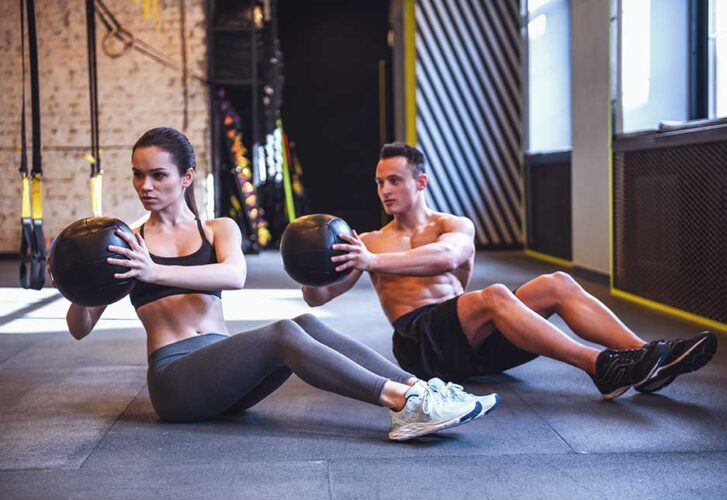
If you are passionate about fitness, helping others, and working with athletes, becoming a sports trainer could be a rewarding career for you. Sports trainers, also known as athletic trainers, play an important role in making sure that athletes stay healthy, recover from injuries, and perform at their best. In Florida, as in other states, becoming a sports trainer requires a combination of education, certification, and hands-on experience.
Let us guide you through the steps involved in how to become a sports trainer in Florida, from the necessary educational path to certification and beyond.
What Does a Sports Trainer Do?
Sports trainers are healthcare professionals who specialize in the prevention, diagnosis, and treatment of sports-related injuries. They work closely with athletes at all levels, from amateur to professional, to make sure their bodies are in peak condition for their sport. Sports trainers are essential in rehabilitation, assisting athletes with recovery after injuries. They also provide guidance on nutrition, injury prevention, and proper exercise techniques.
Key duties of a sports trainer include:
- Assessing and diagnosing sports-related injuries
- Creating rehabilitation programs for injured athletes
- Implementing injury prevention strategies
- Conducting physical assessments of athletes to make sure they are fit for participation
- Offering emergency care in case of injury during practices or events
- Educating athletes about proper body mechanics, stretching, and warm-up routines
If you are interested in helping athletes stay healthy and perform their best, becoming a sports trainer may be the right career choice for you.
Step 1: Obtain the Necessary Education
To become a sports trainer in Florida, you must start by obtaining the appropriate education. The educational requirements typically involve earning a degree in athletic training or a related field. This makes sure that you have a solid understanding of anatomy, physiology, biomechanics, and injury prevention.
Most aspiring sports trainers pursue a Bachelor’s degree in athletic training, kinesiology, exercise science, or a related field. A typical program includes courses in:
- Anatomy and physiology
- Injury prevention and rehabilitation
- Sports nutrition
- Exercise physiology
- Biomechanics and movement science
- First aid and emergency care
Additionally, many programs offer hands-on experience through clinical internships, where students get the chance to work directly with athletes under the supervision of licensed professionals.
For those seeking a career in fitness and training, NPTI Florida offers programs in personal fitness training that offer a strong foundation in fitness and health, which is important for those looking to transition into athletic training or expand their career in fitness.
Step 2: Gain Practical Experience
In addition to formal education, gaining practical experience is an important part of becoming a sports trainer. Most athletic training programs require students to complete clinical internships, where they gain hands-on experience working with athletes and treating sports injuries.
During these internships, you will work under the supervision of licensed sports trainers or other healthcare professionals. You will have the opportunity to observe and participate in the daily tasks of an athletic trainer, such as assessing injuries, developing rehabilitation programs, and offering treatment. This practical experience will give you a better understanding of the realities of the job and help you develop the skills necessary to succeed in the field.
It is also beneficial to gain experience working in a variety of settings. For example, some sports trainers work with high school or college sports teams, while others may work with professional athletes, sports clinics, or even in fitness centers. The more diverse your experience, the better equipped you will be to handle different types of injuries and athletes.
Step 3: Get Certified
Once you have completed your education and gained practical experience, the next step in becoming a sports trainer in Florida is obtaining certification. Certification is important for proving your competency and making sure you meet the professional standards required to practice as an athletic trainer.
The primary certification for sports trainers is the Board of Certification (BOC) for Athletic Trainers. To become BOC-certified, you must:
- Graduate from a program accredited by the Commission on Accreditation of Athletic Training Education (CAATE).
- Pass the BOC exam, which tests your knowledge in areas such as injury prevention, assessment, rehabilitation, and emergency care.
The BOC exam consists of multiple-choice questions and practical scenarios that test your ability to apply what you have learned in real-world situations. Passing the exam is required to become a licensed sports trainer in Florida and many other states.
In Florida, in addition to BOC certification, you will also need to apply for state licensure to practice as an athletic trainer. This licensure is typically granted upon successful completion of the certification process.
Step 4: Maintain Certification and Licensure
Once you are a certified and licensed sports trainer, it is important to stay up-to-date with the latest trends, research, and techniques in athletic training. Certification is not a one-time requirement; sports trainers are required to complete continuing education to maintain their certification.
The BOC requires certified athletic trainers to complete continuing education courses (CEUs) every two years to maintain their certification. These courses cover topics such as new treatment methods, injury prevention strategies, and the latest advancements in sports medicine. Continuing education makes sure sports trainers stay knowledgeable about current practices and can offer the best possible care for their clients.
In addition, Florida requires sports trainers to renew their state licensure periodically. This may involve completing continuing education requirements specific to Florida’s regulations.
NPTI Florida’s advanced personal fitness training program helps trainers enhance their skills and stay current with new training techniques, making it easier for you to stay competitive and knowledgeable in the field of athletic training.
Step 5: Specialize in a Niche Area (Optional)
After you have gained experience and are working as a sports trainer, you may want to specialize in a specific area of athletic training. Specializing in a niche area allows you to offer more targeted care and sets you apart from other professionals in the field.
Some common specializations within athletic training include:
- Sports performance training: Focusing on enhancing athletic performance through strength training, conditioning, and technique optimization.
- Rehabilitation: Working with athletes recovering from injuries and helping them return to their sport.
- Youth athletics: Specializing in injury prevention and treatment for young athletes.
- Orthopedic training: Specializing in musculoskeletal injuries and rehabilitation.
Becoming a personal training specialist can also be a valuable step to take after becoming a certified sports trainer. This specialization allows you to enhance your skill set, focus on specific fitness areas, and work with athletes of all levels.
Career Opportunities for Sports Trainers in Florida
Once you have completed all the necessary steps to become a sports trainer in Florida, you will have a variety of career opportunities available to you. Sports trainers can work in:
- High schools and colleges, working with student-athletes
- Professional sports teams, offering care to athletes at the highest level
- Sports clinics, offering rehabilitation and injury prevention services
- Fitness centers or personal training studios, where you can help athletes and fitness enthusiasts improve their performance
- Hospitals and outpatient clinics, working with a range of patients, including athletes recovering from injuries
Florida has a thriving sports industry, making it an excellent place to start your career as a sports trainer. With numerous professional sports teams, colleges, and recreational leagues, there is a constant demand for skilled athletic trainers who can support athletes of all levels.
Becoming a sports trainer in Florida involves a clear path of education, certification, and hands-on experience. If you have a passion for sports, fitness, and helping others achieve their athletic potential, this career can be incredibly rewarding. By following the steps outlined in this article, you can take the necessary steps to become a certified sports trainer and begin your journey in this exciting field.

